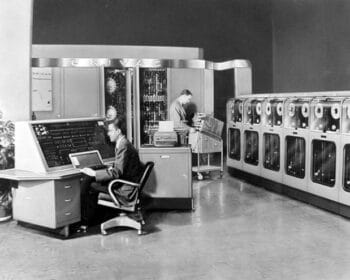The Blaster Worm
GPS Bombs

CNN article; February 9th, 1998 Military researchers have developed a new bomb that is guided by satellites instead of lasers so pilots can hit their targets even during cloudy weather. During the 1991 Persian Gulf War, pilots couldn’t always hit their targets with laser-guided bombs in cloudy weather because clouds…
DVD Burners
Earth Simulator System

From an NEC press release: NEC Corporation today announced the completion of its delivery of the ultra high-speed vector parallel computing system known as “the Earth Simulator,” to the Earth Simulator Center. The system is slated to begin operation on March 11, 2002. The Earth Simulator was developed by the…
NEC Technologies
UNIVAC
Quantum Computing
“Quantum computing begins where Moore’s Law ends — about the year 2020, when circuit features are predicted to be the size of atoms and molecules,” says Isaac L. Chuang, who led the team of scientists from IBM Research, Stanford University and the University of Calgary. “Indeed, the basic elements of…
AOL Time Warner
The Nimda Worm
The CERT/CC received reports of new malicious code known as the “W32/Nimda worm” or the “Concept Virus (CV) v.5.” in September, 2001. This new worm appeared to spread by multiple mechanisms. It modifies web documents (e.g., .htm, .html, and .asp files) and certain executable files found on the systems it…




